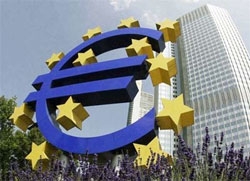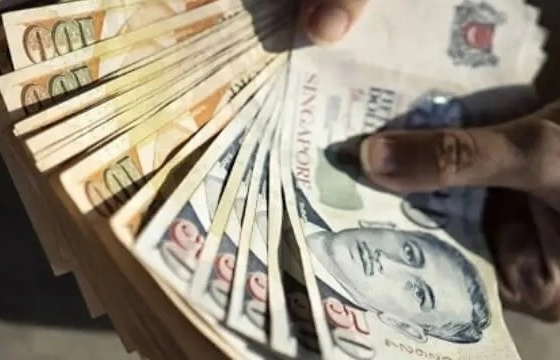Pace of eurozone private sector loans eases in July: ECB
 Overall bank lending increased by 2.4 per cent compared with the same month last year but that was a small decline from 2.5 per cent in June, the ECB data showed.
Overall bank lending increased by 2.4 per cent compared with the same month last year but that was a small decline from 2.5 per cent in June, the ECB data showed.
A breakdown of the data showed a contraction of 2.1 per cent in household credit for consumption, while loans for home purchases grew 3.9 per cent.
"Our empirical studies suggest that low loan growth hints at further downside risks for economic growth," Commerzbank analyst Michael Schubert said.
The 17-nation eurozone economy grew by a meagre 0.2 per cent in the second quarter of 2011, heightening fears of a slide back into recession as the bloc tries to contain a debt crisis.
Meanwhile, growth in eurozone money supply, a key indicator of demand in the economy, edged higher in July but only following a revision of the June figure lower, the ECB data showed.
The M3 indicator rose 2.0 per cent following a gain of 1.9 per cent in June.
The ECB had initially estimated the increase in June at 2.1 per cent and analysts polled by Dow Jones Newswires had pencilled in a rise of 2.2 per cent in July.
"One might expect these trends to worsen into August, given the intensificiation of the financial tensions" in Europe, Barclays Capital economist Julian Callow said.
The ECB regards the M3 figure as a key guide to inflation pressures and uses it to set interest rates accordingly.
The central bank seeks to keep eurozone inflation below but close to 2.0 per cent but it stood at 2.5 per cent in July.
The central bank raised its benchmark interest rate to 1.50 per cent last month to contain inflation but is now expected to sit tight for the next few months, at least, owing to the sharp slowdown in eurozone activity.
What the stars mean:
★ Poor ★ ★ Promising ★★★ Good ★★★★ Very good ★★★★★ Exceptional
 Tag:
Tag:
Related Contents
Latest News
More News
- Thailand seeks to promote digital training (November 04, 2024 | 16:14)
- Indonesia attracts foreign investment in technology sector (November 04, 2024 | 16:08)
- Tropical storm Trami leaves at least 24 people dead in Philippines (October 24, 2024 | 17:36)
- Singapore grants conditional approval for solar power import from Australia (October 24, 2024 | 17:27)
- ASEAN digital economy set to reach $2 trillion by 2030 (October 22, 2024 | 15:08)
- Thailand asks Laos to waive visa fee at border checkpoints to boost tourism (October 21, 2024 | 17:23)
- Laos pledges to continue efforts to empower girls (October 21, 2024 | 17:17)
- Chinese electric vehicle maker to build plant in Indonesia (October 21, 2024 | 17:12)
- Vietnam Elevator Association introduces Elevator Safety Application to the world (October 18, 2024 | 09:00)
- A taste of the future - the go-to spot at the Worldchefs Congress & Expo 2024 (October 15, 2024 | 16:11)

























 Mobile Version
Mobile Version